Rectifiers and Power Supplies
Power Supply Capabilities
Most house circuits are fused for 15 or 20 Amps.
At 120 Volts, this can provide 1800 or 2400 Watts respectively.
This is a tremendous amount of power available from each fused circuit in a home.
Power supplies convert 120 Volt wall plug voltage down to a lower voltage and current capability that is safer and more useful for users.
Power Transformation Capabilities
AC power supplies contain the transformer as a key element.
The transformer reduces the voltage level to a useful lower voltage with a current capability determined by the transformer design.
The addition of:
- fuse protection
- variable output voltage control
- desired connectors to interface with the load
completes a basic AC power supply
Direct Current Power Supplies
DC power supplies contain the AC transformer to reduce the power supply voltage to a lower level.
However, DC power supplies must also convert (rectify) the AC voltage and current to DC.
The rectification process is accomplished using diodes connected to the output secondary winding of the transformer.
The rectified DC output is then filtered and controlled to produce the desired effect.
DC Half Wave Rectification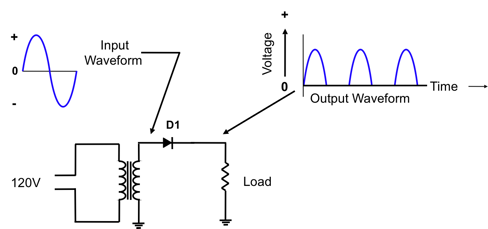
Only the positive half of the AC voltage waveform reaches the load.
Half-wave rectifiers are used in the low quality power supplies.
DC Full Wave Rectification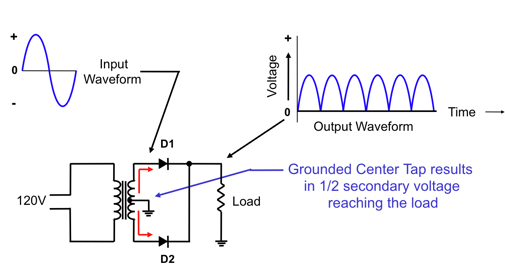
The negative half of the AC voltage waveform is rectified to positive voltage.
Both halves of the AC waveform reach the load.
Full-wave rectifiers are used in most power supplies.
DC Bridge Rectifiers (Full Wave)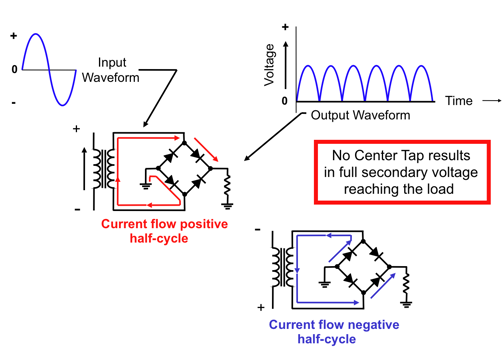
Filtering
Regulation
Regulation is the capability of a power supply to maintain the desired output voltage when the output current increases from a low level to a high level.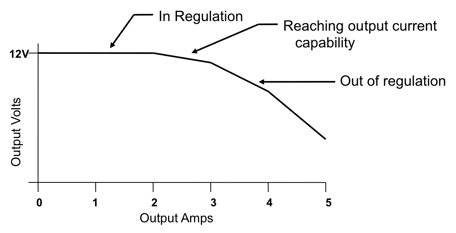
Model Railroad Power Supplies
Most newer “brand name” MRR train controllers are well designed, filtered, and will stay in regulation over the stated power output parameters.
When using DC or AC wall plug power sources you may encounter units that do not have sufficient filtering and/or regulation.
If a unit you are using exhibits:
- excess AC hum from the unit or circuits powered by the unit
- output voltage drops as the load increases
You may be encountering poor filtering or low power capacity.
Wall Plug-In Power Supplies
These are great power supplies for specific uses - such as for lighting buildings, powering accessories and otherwise augmenting you train controller power supply.
These are available in a large choice of output voltages and output current capabilities.
Examples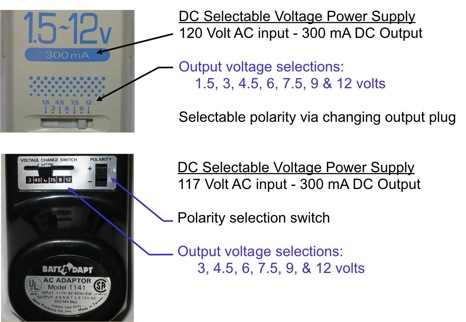
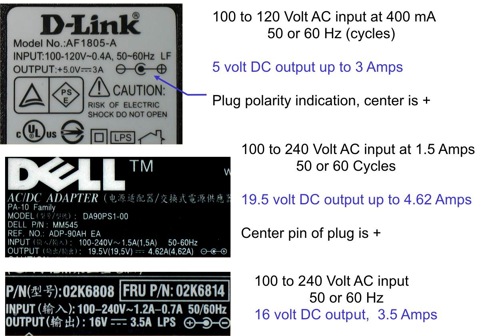
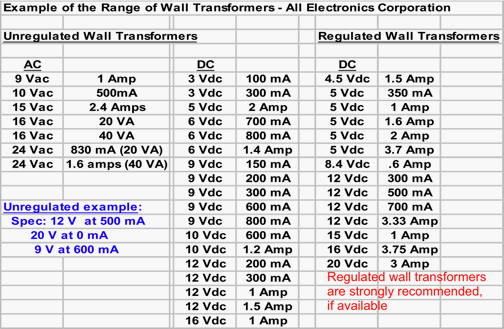
Team Digital note: The above wall transformer table is current as of 4/08.
